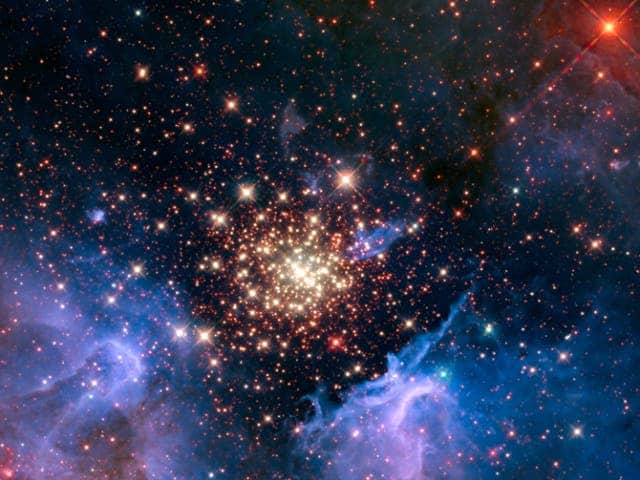
The above photo was captured by the Hubble Space Telescope around mid last year, proving excellent practice for Hubble’s newly installed Wide Field Camera 3. Captioned is the by now famous NGC 3603 nebula, located in the Carina spiral arm – it’s by far one of the most spectacular star forming regions in the Milky Way. Scientist at first, soon followed by the whole astronomy enthusiast community, were simply stunned by the beauty of nebula when Hubble first offered images back in 2007, this time around though the telescope ‘was kind enough’ to transmit photos in much greater detail, besides providing data regarding sources of sulfur, hydrogen and iron .
The stars located in the NGC 3603 seem like destined for an atypical life – these are stars that are born to grow huge and bright, but at the same time they live fast and die young, burning through their precious hydrogen at a rapid pace, before ultimately depleting the last remainder of their resources, and blowing out fearsome ultraviolet radiation.
Indeed, the NGC 3603 solar inhabitants are massive – the largest of them spanning at a mass of 115 times the one of our own sun.  Three of them, actually, have a mass that is larger that is theoretically possible – the most valid explanation scientists pose is that they’re actually pairs of two stars, so close together that even Hubble can’t yet tell them apart.
Three of them, actually, have a mass that is larger that is theoretically possible – the most valid explanation scientists pose is that they’re actually pairs of two stars, so close together that even Hubble can’t yet tell them apart.
Image: NASA via Wired.






